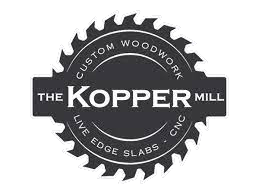Post Test 4
More wood is sent to landfills from cities than from national forests. Yes, you read that correctly. But how did it get to this point, and what’s being done about it?
Enter the Baltimore Wood Project, taking urban wood renewal to the next level. This Maryland-based wood supplier aims to separate from the boutique aspect of the urban wood niche, instead bringing the focus to forming a regional economy surrounding wood and land restoration as a whole. Originating in Baltimore with the intention of expanding its model elsewhere, this project achieves more than just quality reclaimed lumber; it impacts the lives of those involved, and by extension, their home.
Wasted potential
Wood is a valuable, renewable resource. So why do we waste so much of it?
Before you go to bat—I know, as fine furniture makers, you’re ready to cite each and every piece of scrap you’ve salvaged over the years, with some of us even going so far as to dumpster dive for materials. The idea of renewal and restoration of these same materials outside the shop should therefore be a natural development for many, yet wood waste only continues to grow steadily each year. While we’ve made strides in recycling and combustion with energy recovery in the past few decades, there are still glaring missed opportunities in urban areas that don’t usually come to mind when we think of lumber.
The advantages of urban wood renewal extend beyond environmental factors. Like a mutually beneficial domino effect, this undertaking not only contributes to restoration of valuable resources; it also reclaims the livelihood of the people in these areas, as well as the cities themselves.
More wood is sent to landfills from cities than from national forests. Yes, you read that correctly. But how did it get to this point, and what’s being done about it?
Enter the Baltimore Wood Project, taking urban wood renewal to the next level. This Maryland-based wood supplier aims to separate from the boutique aspect of the urban wood niche, instead bringing the focus to forming a regional economy surrounding wood and land restoration as a whole. Originating in Baltimore with the intention of expanding its model elsewhere, this project achieves more than just quality reclaimed lumber; it impacts the lives of those involved, and by extension, their home.
Wasted potential
Wood is a valuable, renewable resource. So why do we waste so much of it?
Before you go to bat—I know, as fine furniture makers, you’re ready to cite each and every piece of scrap you’ve salvaged over the years, with some of us even going so far as to dumpster dive for materials. The idea of renewal and restoration of these same materials outside the shop should therefore be a natural development for many, yet wood waste only continues to grow steadily each year. While we’ve made strides in recycling and combustion with energy recovery in the past few decades, there are still glaring missed opportunities in urban areas that don’t usually come to mind when we think of lumber.
The advantages of urban wood renewal extend beyond environmental factors. Like a mutually beneficial domino effect, this undertaking not only contributes to restoration of valuable resources; it also reclaims the livelihood of the people in these areas, as well as the cities themselves.

